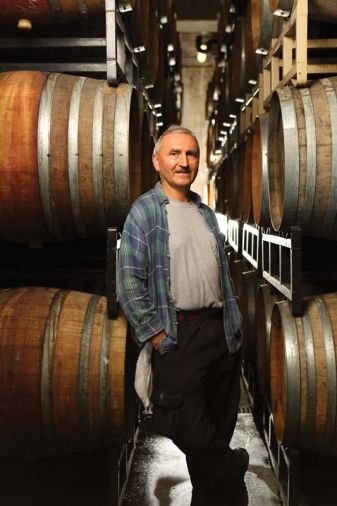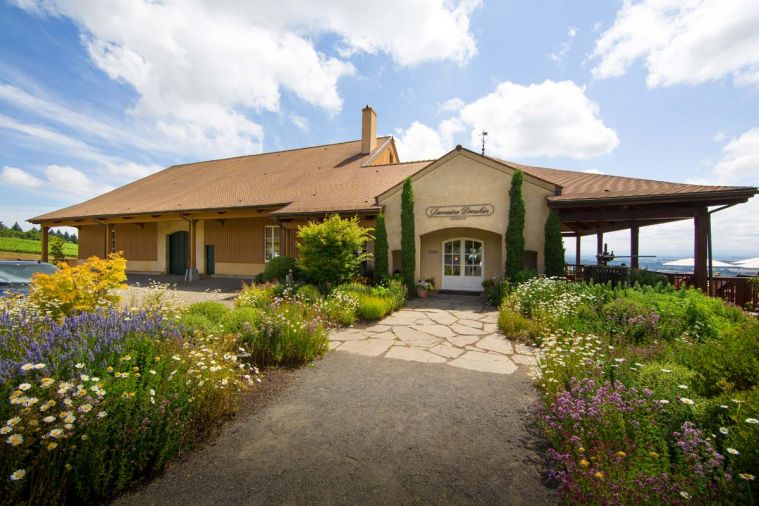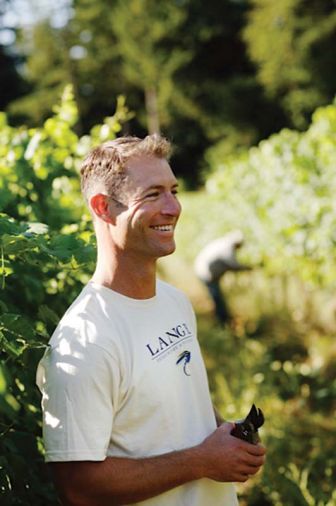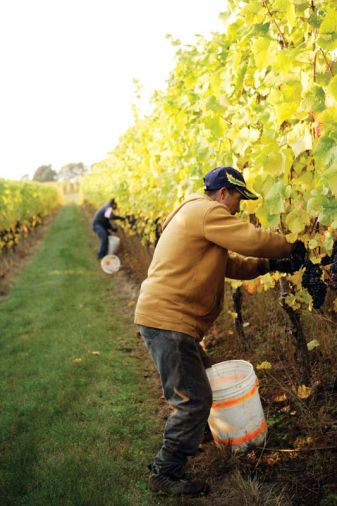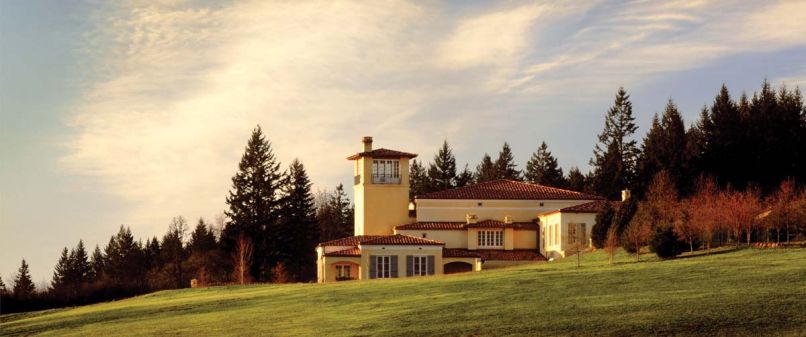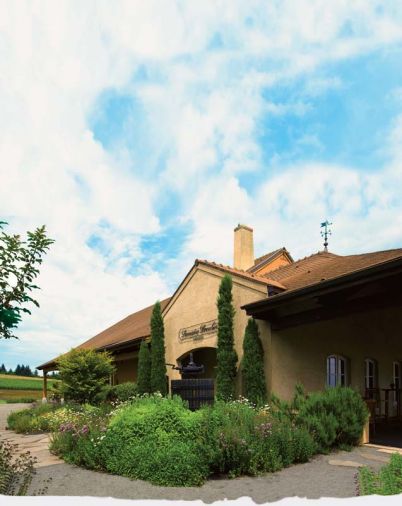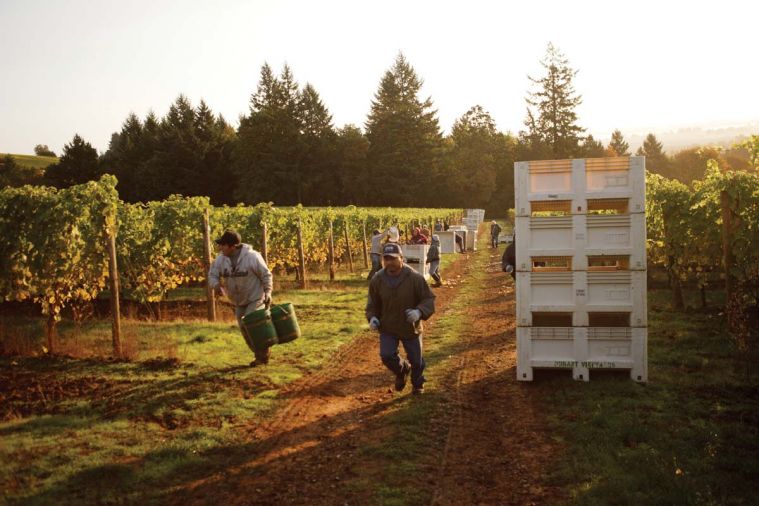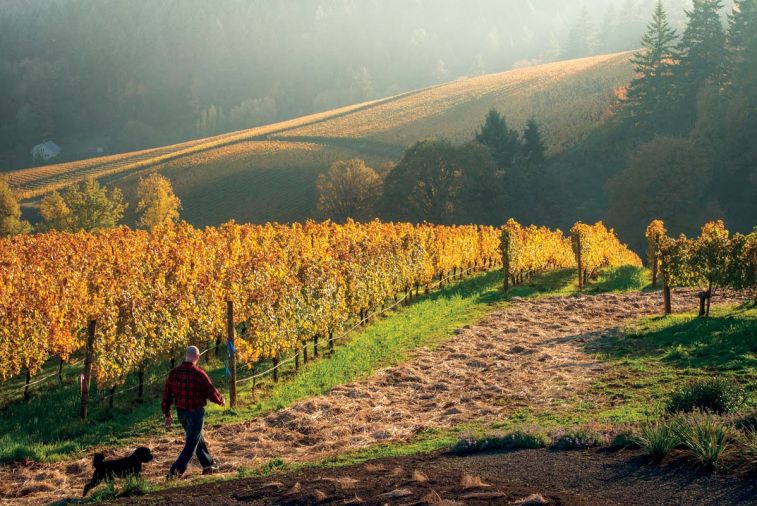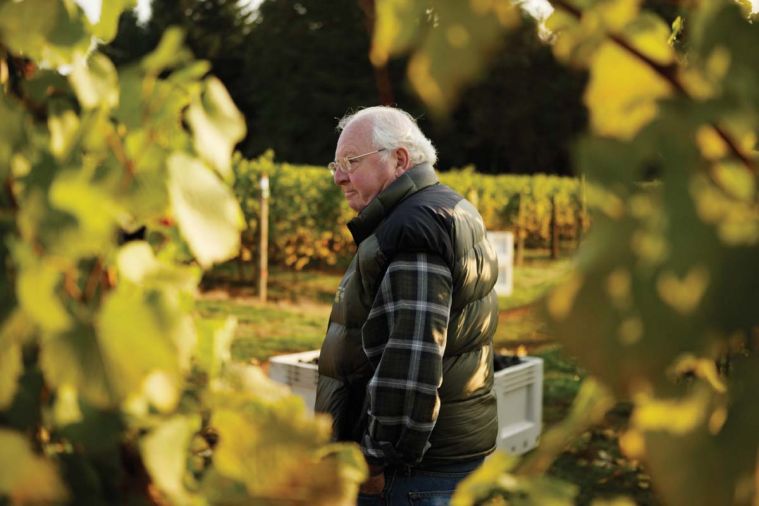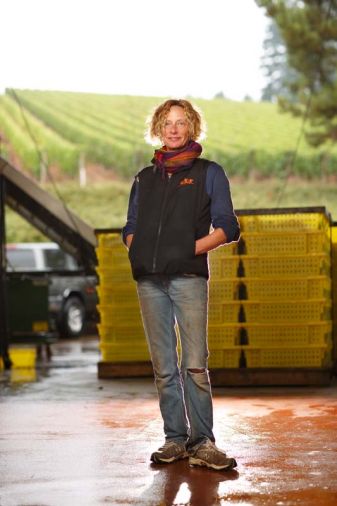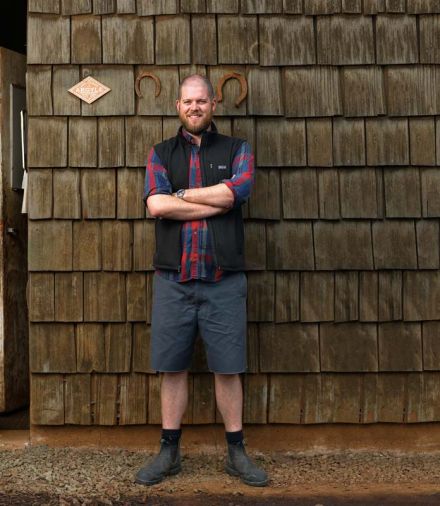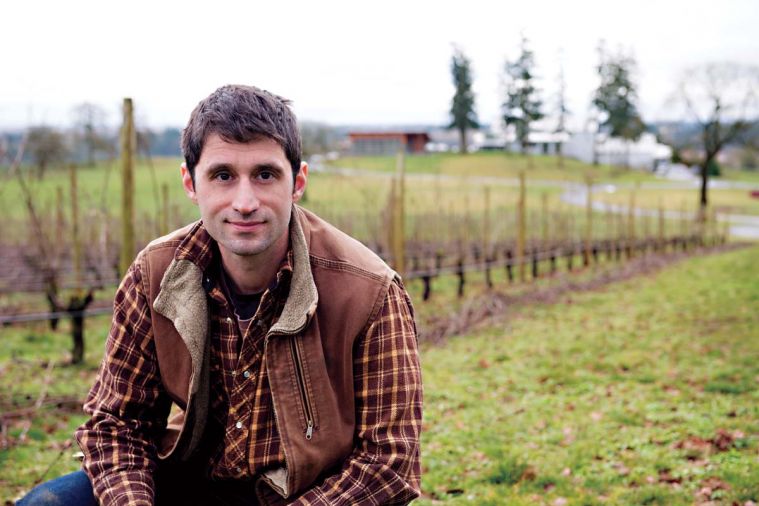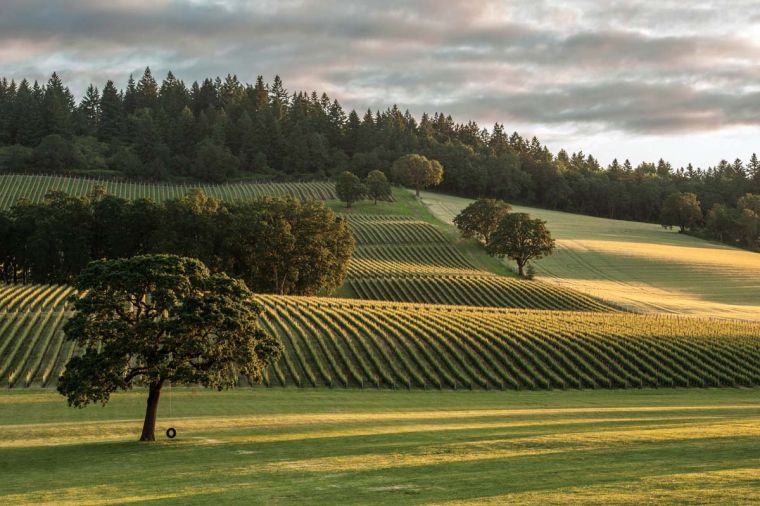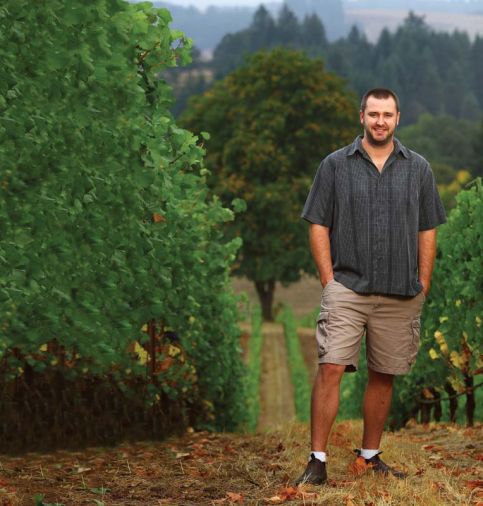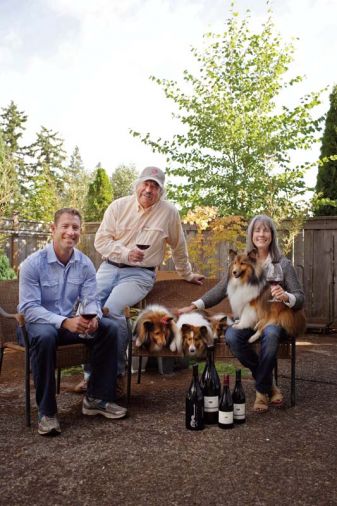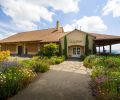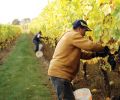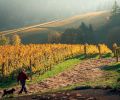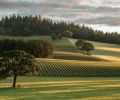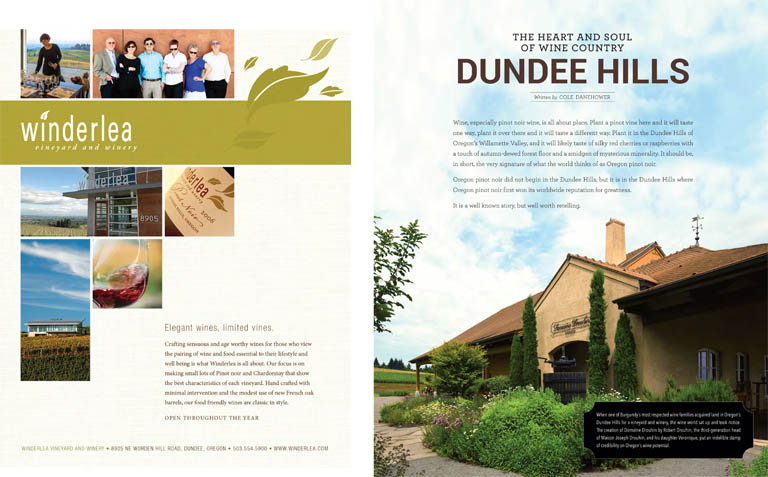Wine, especially pinot noir wine, is all about place. Plant a pinot vine here and it will taste one way, plant it over there and it will taste a different way. Plant it in the Dundee Hills of Oregon’s Willamette Valley, and it will likely taste of silky red cherries or raspberries with a touch of autumn-dewed forest floor and a smidgen of mysterious minerality. It should be, in short, the very signature of what the world thinks of as Oregon pinot noir.
Oregon pinot noir did not begin in the Dundee Hills, but it is in the Dundee Hills where Oregon pinot noir first won its worldwide reputation for greatness.
It is a well known story, but well worth retelling.
In the autumn of 1964, a young graduate of the famed viticulture and enology program at UC Davis named David Lett gathered 3,000 vine cuttings from various California vineyards and just after Christmas headed North to Oregon.
Lett had been taught that Oregon was too cold and wet to successfully grow wine grapes, but he thought otherwise. He was convinced the climate in the Willamette Valley was just right for certain socalled “cool climate” grapes, pinot noir—the great red grape of Burgundy—prime among them.
Unpropitiously, that winter was exceptionally wet, even for Oregon. Lett later recalled that the asphalt ribbon of the still-being built I-5 freeway was almost obscured by what seemed to be the surrounding Willamette Valley lake, so heavy had been the season’s floods. Lett sheltered his cuttings in a rented nursery plot outside of Corvallis while he looked for permanent vineyard land.
He found exactly what he wanted on a south-exposed slope in what was then known as the Red Hills of Dundee. With his planting in 1966 of the first vines at what Lett christened The Eyrie Vineyards, he also fixed the Dundee Hills as ground zero of the Oregon pinot explosion that continues today.
Lett wasn’t entirely alone in discovering the Dundee Hills’ affinity for grapes. A pamphlet published in 1908 by the Yamhill County Development League featured a full-color plate of much earlier grapes grown on the “Red Hills of Yamhill.” And quickly after Lett’s vines went into the ground, new wine growing neighbors joined him on the Dundee Hills, including Dick Erath, Bill Blosser and Susan Sokol Blosser. A few years later, Burgundy itself followed.
In 1979, a blind tasting of pinot noir wines was held in Paris. To everyone’s surprise, an upstart wine from Oregon’s far off Dundee Hills outranked many of Burgundy’s best wines. So impressive—and unlikely— was The Eyrie Vineyards 1975 South Block Reserve wine’s performance, that a year later Robert Drouhin, scion of Burgundy négociant, Maison Joseph Drouhin, staged a re-tasting on his home turf of Beaune, France. The result was essentially the same—and it changed Oregon forever.
Impressed with Oregon’s potential, Robert’s daughter Véronique came to the Dundee Hills in 1986 with a degree in enology and worked harvest at Eyrie and other nearby vineyards. The next year Robert purchased land in the Dundee Hills and founded Domaine Drouhin Oregon. The wine world was stunned: never before had a Burgundy producer invested so heavily in a New World venture.
With such an influential stamp of approval from a legendary Burgundy name, the Dundee Hills were off and running as the unofficial home of North America’s best answer to Burgundy.
When today’s worldwide wine lovers encounter a Willamette Valley pinot noir, chances are it had its roots in the slopes of the hills outside the hamlet of Dundee. Some of the best-known Oregon wine names—Domaine Drouhin Oregon, Stoller Family Estate, Erath, Archery Summit, Sokol Blosser, Domaine Serene—are based in the Dundee Hills. So with all the enthusiastic acclaim, are the Dundee Hills really that great for wine? In a word, yes.
DUNDEE HILLS TERROIR
The French term terroir is difficult to explain; literally, it means the “taste” of a place. Broadly, it refers to the idea that wines express the unique characteristics of the place where the grapes were grown. This is also the concept, in a wider way, behind the idea of appellations, or designated wine growing regions. The Dundee Hills was granted the American version of appellation status, called an American Viticultural Area (AVA), in 2004. AVAs aren’t about wine quality, but they are about geography—and geography determines the personality of wine.
It starts with the climate. As part of the larger Willamette Valley AVA, the Dundee Hills AVA shares a climate that is ideally suited to the evolutionarily-conditioned ripening habits of grapes that require a “cool” climate to ripen properly.
Stand amidst the vines of a Dundee Hills vineyard in the middle of summer and you would not consider it cool. But for a grape, the amount of growing season heat it receives in the Willamette Valley is less than in other, warmer regions (such as eastern Washington, or much of lower-latitude California). This makes the region perfect for pinot noir, pinot gris, chardonnay, riesling, and other grapes best adapted to cooler areas.
But even within the Willamette Valley, the Dundee Hills has its own climatic character that makes its wines distinct from neighboring appellations.
The Dundee Hills are a circular-ish set of Coast Range foothills that rise above the valley floor to a little over 1,000 feet. The Yamhill-Carlton AVA is to the west, between the Dundee Hills and the Coast Range. This means the Dundee Hills are better protected from marine air and Pacific Ocean storms, and so is a bit drier and warmer than the Yamhill-Carlton AVA.
At the same time, the higher Chehalem Mountains lie to the north, providing protection from cold winter winds and hot summer breezes that flow into the Willamette Valley from the Columbia Gorge. The Dundee Hills, therefore, are generally more moderate in temperature than other parts of the region—which helps give the AVA’s grapes a more uniform character.
It ends with the dirt. Perhaps more than anything else, the Dundee Hills are known for their rufous-hued, iron-rich, silty clay loam soils called Jory. Formed from decomposed ancient basalt (which is the soil’s bedrock), Jory is now the official state soil of Oregon and is highly prized for its affinity for pinot noir.
This dirt is unusually deep for hillside soils, ranging from 6 to 8 feet between surface and bedrock, and it is only moderately fertile, capable of few agricultural crops. But grapes love it. It drains well enough to keep grapevine roots dry during the summer, yet holds just enough moisture to generally not require irrigation. It maintains a comfortable temperature for roots during the summer, and does not freeze in the winter. And, it is more on the acidic side than the alkaline, a fact that some believe adds to the flavors it imparts in the grapes.
All of this is not to say that Jory soil is better for pinot noir than other soils, only that it lends certain characteristics to pinot noir wines—especially those from the Dundee Hills.
WINES
Other grape varieties grow here, and beautifully so, but it is the character of the pinot noir that has given the Dundee Hills their celebrity. Pinot noir is famously “transparent”, meaning that it displays the unique characteristics of the vintage and place where it was grown more readily than other grapes. So while pinot noir wines grown at the vineyards in the Dundee Hills will vary in style, there does seem to be an overall Dundee Hills pinot noir character.
It is always dicey describing the characteristics of wine since everyone’s sense of flavors and aromas differ. Nevertheless, over the decades Dundee Hills pinot noir wines have come to be associated with a common set of attributes.
First of all, the fruit flavors seem to be redolent of the kind of lushly flavored red berry fruits that ripen so wonderfully in the Northwest: Bing cherry, Hood strawberry, Stevens cranberry, Cascade Delight raspberry. Often these flavors are accompanied by a sense of pretty violet or lavender notes, adding a pleasing floral quality.
Frequently the fruitiness is accented by gentle earthy undertones, sometimes reminiscent of the smells you experience when walking in a damp autumn forest, or when raking dried leaves, or even when turning fresh garden humus. Sometimes there are hints of minerality, a difficult to describe sensation of “wet stones” or a kind of dried, slightly edgy salinity.
Besides the flavors and smells of Dundee Hills pinot noirs, they are also noted for gentle tannins, medium-to-high acidity, medium-tolight body, and generous, silky textures. Taken together, these different traits combine to create wines of uncommon elegance, even grace, yet with focus and intensity. They seem to have a kind of energy to them, yet without overt boldness or drama. They embody the cliché descriptor of the best pinot noirs: an iron fist in a velvet glove.
EXPERIENCING THE WINES
Of course you can go to the wine shop, find a few bottles of Dundee Hills wine, and take them home to enjoy. But the very best way to experience the wines of the Dundee Hills is to go visit the wineries themselves: taste the place at the place. The Dundee Hills are only about 25 miles southwest of Portland, so a weekend’s jaunt is easy to do.
But deciding which wineries to visit is far less simple!
Scattered around the vineyard-strewn hills, you can choose to visit any of the “big name” wineries, those who have nationally-prominent brands and which have created sophisticated, in some cases luxurious, tasting options. Erath, Domaine Drouhin Oregon, Stoller Family Estate, Archery Summit, Sokol Blosser, and Domaine Serene are all examples of prestige labels with engaging tasting rooms that offer estate vineyard views and customized tasting options. Often there are outside seating facilities and winery tours available as well.
Also strewn about the hills are many smaller estates that have been important in the development of the Willamette Valley’s wine culture, and which offer excellent visiting facilities and superb wines Lange Estate Winery & Vineyards, Winter’s Hill Vineyard, DePonte Cellars, Hyland Estates, Maresh Red Barn, Torii Mor are excellent hillside examples. Down from the slopes, in Dundee itself, the tasting rooms of Argyle Winery and Dobbes Family Estate are must-visits for signature examples of Dundee Hills wines.
Despite its long history, the Dundee Hills are also home to a growing group of newer wineries that often push the envelope of wine style and quality. A visit to any of the following wineries offers new discoveries for wine lovers wishing to go beyond the traditional wine labels: Winderlea Vineyard & Winery, ROCO Winery, Alexana Winery, White Rose Estate, Vista Hills Vineyard & Winery, The Four Graces, Thistle Wines, Durant Vineyards, Crumbled Rock, Winery, Bella Vida Vineyard, Barrel Fence, Armonéa Vineyard & Winery, and Domaine Trouvère.
Some of the most important, and interesting Dundee Hills wineries have their tasting rooms in out-of-the-AVA locations. The AVA’s founding winery for instance, The Eyrie Vineyards, does their tastings at the original winery in nearby McMinnville. Westrey Wine Company, likewise, can be visited by appointment at their facility in McMinnville. Fox Farm Vineyards operates out of their tasting room in Newberg.
Besides the tasting rooms, a variety of other Dundee Hills vineyards and wineries offer tastings by appointment, including Anderson Family Vineyard, Ayoub Winery, Native Flora and Nysa Vineyard. A few Dundee Hills wineries, Cameron and Dusky Goose for example, do not offer tasting opportunities.
Of course, there is no rule that says you have to be located in the Dundee Hills in order to make wine from the Dundee Hills! Many out-of-the-AVA winemakers produce wines from Dundee Hills fruit. Élevée Vineyard pinot noir is made by Penner-Ash Wine Cellars, for instance. Crowley makes Dundee Hills pinot noirs from La Colina and Gehrts Vineyards, Matello uses fruit from the Durant vineyard, and Et Fille makes a fine pinot noir from Maresh Vineyard.
So it is easy to experience the Dundee Hills in any number of ways. But however you choose to visit the Dundee Hills, or to sample the appellation’s wines, you will undoubtedly be impressed with their distinctive characters. There is wine history to be experienced in this AVA, but there is also freshness and innovation. In nearly every respect, the Dundee Hills embodies all that is wonderful about Oregon’s wine culture!
HOW THE DUNDEE HILLS AVA GOT ITS NAME
For generations the undulating hills west of the town of Dundee, Oregon, have been known as the Red Hills of Dundee. From the start wineries in the area proudly referred to their location as the Red Hills of Dundee. Wine books published before 2005, including the seminal North American Pinot Noir by John Winthrop Haeger and The Oxford Companion to the Wines of North America, refer to the area as the Red Hills of Dundee.
So why is the appellation now called the Dundee Hills? When Willamette Valley vineyard owners and winemakers decided to petition for a series of new, more specific AVAs, one of the submissions was to create a new “Red Hills” AVA. But, at around the same time, a slightly prior petition was received by the government for a “Red Hill” AVA in Southern Oregon.
Despite the fact that the dozens of vineyards and wineries located in Willamette Valley hills outside of Dundee had been known as the Red Hills for generations, or that the submission from Southern Oregon encompassed but a single vineyard, there was an obvious potential for confusion between the “Red Hills” and “Red Hill”.
The Willamette Valley petitioners revised their proposed name to be “Red Hills of Dundee.” Unfortunately, there are a variety of other wine appellations, both domestically and internationally, that contain some form of the names “Red” and “Hill(s).” In order to avoid consumer confusion, the final approved name of the Willamette Valley child—AVA became “Dundee Hills AVA,” and the Southern Oregon appellation became the “Red Hill of Douglas County, Oregon AVA.” Not ideal for either party, but workable.

